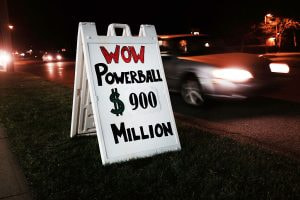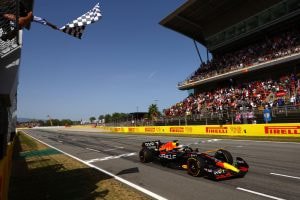Betting on Greyhound Racing: What You Need to Know
Amongst UK betting shop customers, greyhound racing is one of the most popular sports. The sport also attracts a vast number of online bets. In December 2023, Statista, the respected global data and business intelligence platform, reported that £740 million was gambled on greyhound racing during the prior year.

Want fast action? Racing greyhounds can reach a full speed of 70 kilometres per-hour (43 mph) within 30 metres (98 ft) or six strides from the boxes – travelling at almost 20 metres per-second. ©Steve Nash
Why is the sport, which is approaching its 100th year, so popular with gamblers? Here, our quick guide to greyhound betting will answer that question. We will also look at the bet options available to gamblers online, in-shop, and often in-person in the UK and Ireland’s 38 greyhound stadiums.
Fast, Competitive and Fun
Greyhound racing is all about fast action. The majority of races take 30 seconds or less to complete. For the most part, races are very competitive, with few runners in graded races – which make up the bulk of racing action – starting at double-digit odds.
Dogs are also very reliable. Once a greyhound has adopted a run style, they will always race in the same way. For example, some run wide throughout a race, and others stick to the inside rail. For obvious reasons, these are known as ‘railers’. Greyhounds are allocated the trap number that best suits their preferred course.
Similarly, a greyhound that blazes from the starting traps will always run in such a way. Conversely, others start slowly and finish fast. Greyhound punters refer to these as ‘stayers’. And it is not just a run style that greyhounds retain throughout their time in training. Recorded times – used to grade dogs and races – show most greyhounds perform to the same level week-in-week-out.
Easy ID, Form, Vests, Jackets and More
Every greyhound in every race wears a vest or jacket representing its trap starting number. Each is numbered and coloured to make dogs easy to identify when racing.
Here are the colours to look out for.
- Trap 1 – Red
- Trap 2 – Blue
- Trap 3 – White
- Trap 4 – Black
- Trap 5 – Orange
- Trap 6 – Black and White Striped
On the racecard, greyhounds are listed from trap one down the page. And, unlike horseracing, greyhound form is easy to read. Form lines from previous starts show the starting trap number, sectional split (the sectional time from trap rise to winning line on the first circuit), positions in each quarter of the race, the name of the winning dog (or second placed dog), an observational comment – such as “middle-to-rails, led halfway” – the winning time, race grade and the time recorded by the greyhound.
How to Place Win, Each Way and Other Bets
Greyhound races in the UK and Ireland typically consist of six runners. On occasion, there may be only five runners. Sometimes four and, very rarely, just three. As with horse racing, for betting purposes, with five and six runners, each-way bets are paid on the first two home. Four-runner races (or less) are win-only contests.
Australian greyhound races – popular with punters placing wagers via betting apps in the early morning – usually have eight runners. Here, for betting purposes, the first three finishers are considered ‘placed’.
The most common bet types in greyhound racing are win, place, each-way and forecast. Here is what those terms mean:
Win: A win bet is for the selected greyhound to cross the line first. In the case of a dead heat, the stake placed is halved for betting purposes.
Place: Only the UK’s best online bookmakers offer their customers place-only betting. With four, five or six runners, bettors can choose a selection to finish in the first two and, on some betting apps, the first three.
Each-Way: The bet mentioned above combines win and place bets. For instance, a five-unit each-way bet requires a ten-unit stake. Five goes on the win part of the bet, five on the place portion, at a quarter of the win odds. If your selection wins, both bets have been successful. Finishing second, only the place part of the bet is a winner.
Forecast: A very popular wager in greyhound racing is the forecast. As the name suggests, the bet requires bettors to select the first and second to cross the line in the correct order. It is a single-unit wager.
Reversed Forecast: This method of forecast betting requires two selections in a two-unit wager. For the bet to be a winner, the selections must finish first and second, but unlike a straight forecast, they can do so in either order.
Forecast Combination: A normal forecast combination consists of six bets. The bet uses three selections – such as traps 1, 2 and 3. If any combination of those numbers fills the first two positions, punters will be rewarded with the forecast dividend for one-sixth of the bet’s total stake.
Tricast: The tricast is similar to the forecast bet but requires punters to successfully select the first three greyhounds across the winning line in the correct order. Using three selections, this bet also consists of six individual bets.
What. A. Race. 😱
Hats off to the grader @Monmoredogs to produce this thrilling race this afternoon with 12/1 shot Beanos Sadie coming out on top.
The race distances read…
nk, shd, hd, shd, hd pic.twitter.com/iIEVM6z1ZB
— DaveyB (@DaveATBranch) October 18, 2022
Betting Without, Ante Post and Other Bets
Betting Without the Favourite: Online greyhound betting sites offer prices where bettors can place a wager on a dog to win or finish second to the favourite. However, the ‘without the favourite’ bet is a loser if the selection finishes second to any runner other than the favourite.
Trap Challenge: The Trap Challenge has become popular for betting on a greyhound meeting. The bet revolves around the number of winners each trap number will gain at a meeting or in a combination of greyhound meetings. This bet allows for an interest through a meeting or meetings without needing a wager in individual races.
Ante-Post: Ante-post means placing bets on the outcome of a competition before the final race takes place. An example is the ante-post market on the Greyhound Derby. Outright competition betting is typically available many months before the participants are confirmed. The ante-post book is re-opened ahead of every round of the competition.
The advantage of these bets is that bettors can usually take far better odds than what the greyhound will be offered if it reaches the final. The each-way terms are also more generous than conventional wagering on individual greyhound races. Half the advertised price to get the Derby final is a typical example.
But there is a downside. Stakes are lost if your chosen greyhound does not participate in the competition or is withdrawn through injury or sickness before the event starts.
Follow the Form and Note the Percentages
Ultimately, greyhound racing has plenty to offer people who enjoy fast action and like a bet. As a bonus, greyhounds race regularly, generally once a week. This allows fans to easily follow their favourite dogs and keep up-to-date notes on their progress and chances on their next outing.
If you take your greyhound racing betting seriously, you will quickly recognise that the higher the race quality, the more favourable the betting percentages. Newcomers should be aware that while forecasts and tricasts produce handsome dividends, a six-runner race has a potential 30 different forecast outcomes and 120 tricast permutations.



